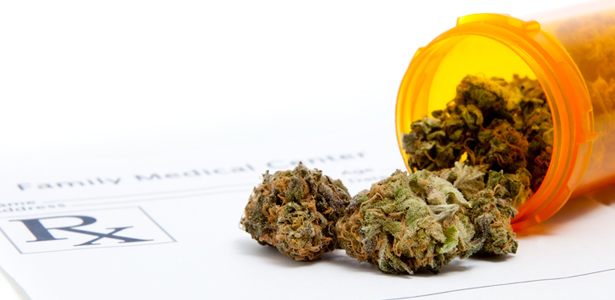
Advertisement
Marijuana is known to have mind-altering affects, including the ability to alleviate migraines. According to a recent study published in the journal Pharmacotherapy, people who suffer from migraine headaches had a significant decline in their frequency when using medical marijuana.
A research team from the Skaggs School of Pharmacy and Pharmaceutical Sciences at the University of Colorado Anschutz Medical Campus reviewed 121 patients diagnosed with migraines, which were treated with medical marijuana between January 2010 and September 2014. They discovered that the rate of migraines reduced from 10.4 to 4.6 headaches each month, which is significant from both a statistical and medical perspective.(1)
A migraine can trigger an intense, throbbing headache that usually affects one side of the head and is often accompanied by nausea, distorted vision and vomiting. They are often preceded by flashes of light, blind spots or a tingling sensation in the arm or leg.
New study gives “smoke screen” a whole new meaning
Among the 121 people studied, approximately 103 claimed to have had a reduction in monthly migraines, 15 claimed the same number and three claimed to have had an increase in monthly migraines.(1)
“There was a substantial improvement for patients in their ability to function and feel better,” Laura Borgelt, PharmD, FCCP, BCPS, who headed the study. “Like any drug, marijuana has potential benefits and potential risks. It’s important for people to be aware that using medical marijuana can also have adverse effects,” she added.(1)

Approximately two-thirds of the participants in the study had a history with cannabis use, or were using cannabis to treat their condition at their visit. Inhaled marijuana appeared to be the best way to treat acute migraines, whereas edible cannabis, which takes a longer time to affect the human body, helped thwart headaches.
Borgelt noted that cannabinoid receptors pervade the human body and are equipped with anti-inflammatory and pain-relieving properties. These cannabinoids also impact essential neurotransmitters like serotonin and dopamine.
“We believe serotonin plays a role in migraine headaches, but we are still working to discover the exact role of cannabinoids in this condition,” she said.(1)
The research was unprecedented in that it was the first study to demonstrate medical marijuana could reduce the frequency of migraines. The authors of the study emphasized the need for more controlled clinical trials in the near future.(1)
“If patients are considering medical marijuana they should speak to their health care provider and then follow up so we can track the impact of their overall treatment,” Borgelt said. “Open communication is necessary because we need to know how all of these treatments work together.”(1)
Stay up-to-date on the medicinal benefits of various herbs with herbs.news, powered by Fetch.news.
Benefits of marijuana extend to other mental health problems
But the medicinal benefits of marijuana don’t end there. Research has shown that cannabis can aid people suffering from mental health problems like stress, anxiety and post-traumatic stress disorder (PTSD). It also has been used to curb lyme disease, ease the painful side-effects of cancer and even treat “Chronic Obstructive Pulmonary Disease” (COPD).
Despite these promising results, the researchers noted that marijuana, like any drug, contains its fair share of risks, as well as benefits. Therefore, in glamorizing the advantages of pot, it is important that users be aware of all its potential disadvantages.
You don’t have to suffer from migraines to reap the benefits of medical marijuana. Unlike alcohol, however, marijuana is a drug that can be used to treat, rather than accelerate, severe headaches; and that is enough reason to substitute a drink with a joint any day of the week.
Sources include:
Submit a correction >>
This article may contain statements that reflect the opinion of the author
Advertisement
Advertisements















